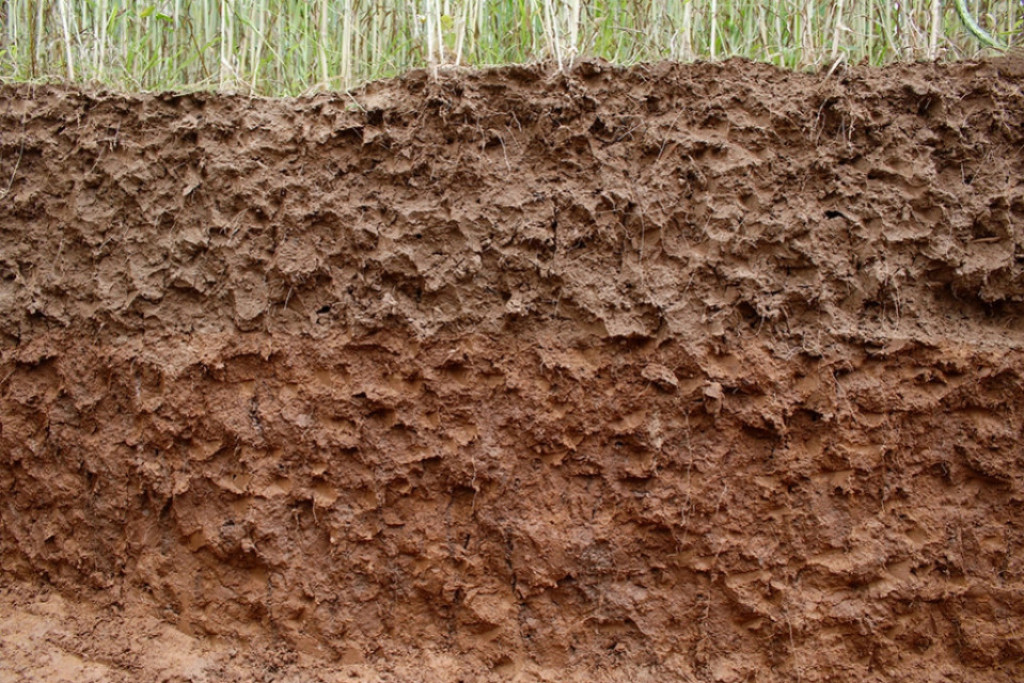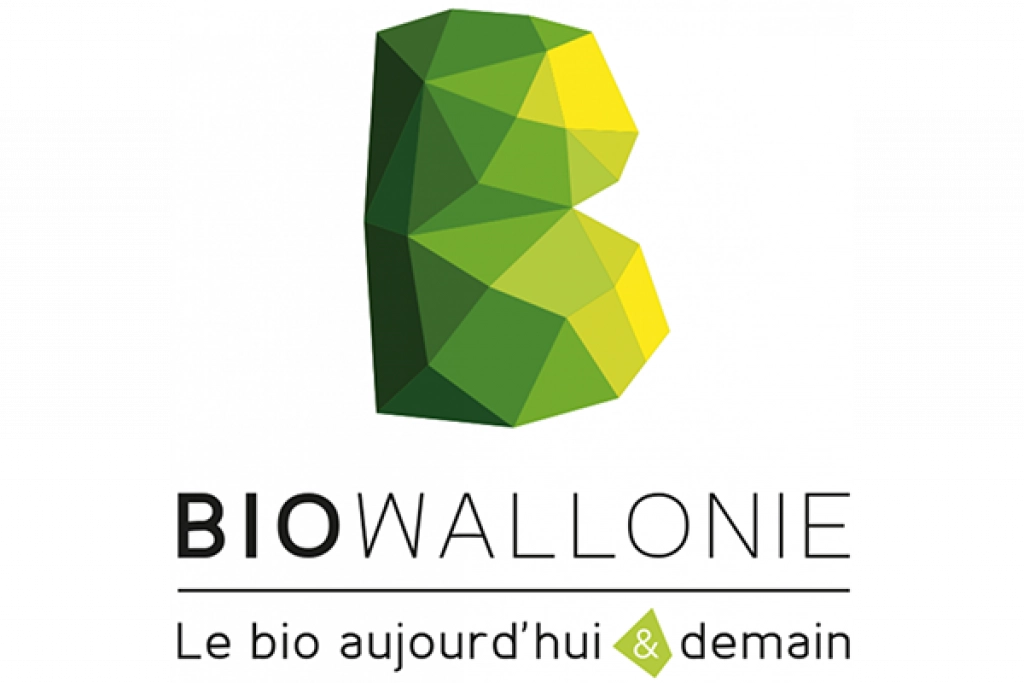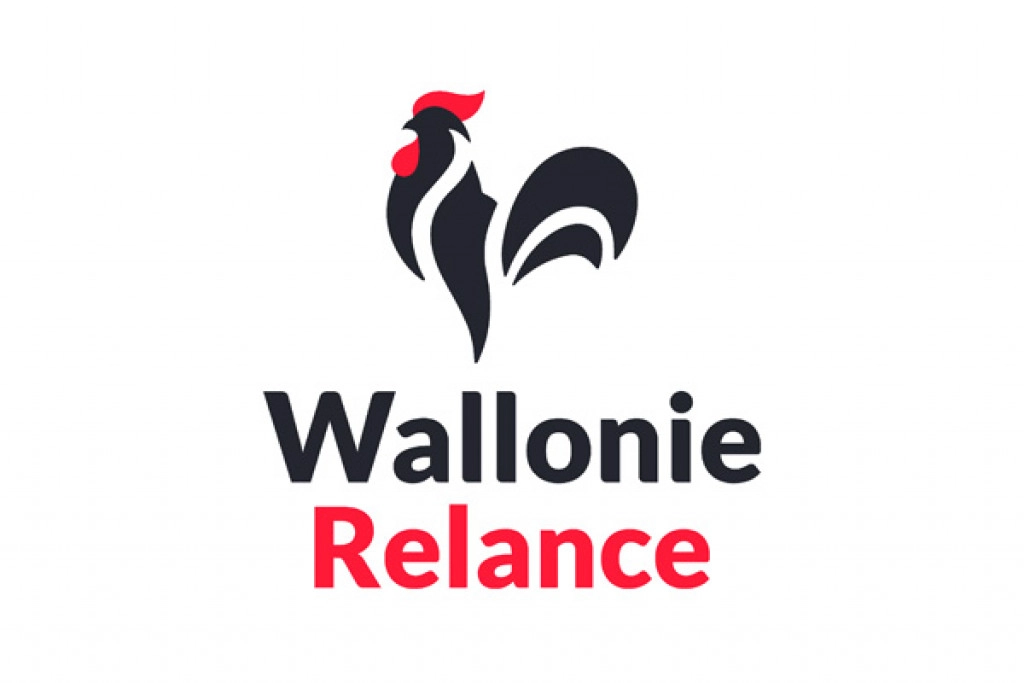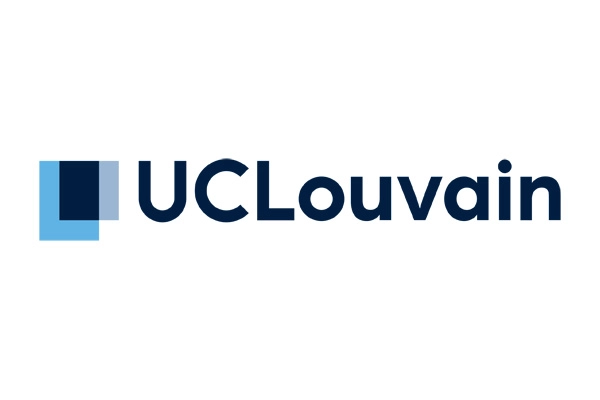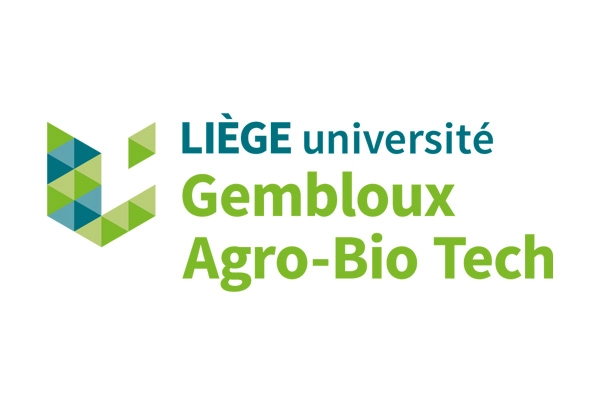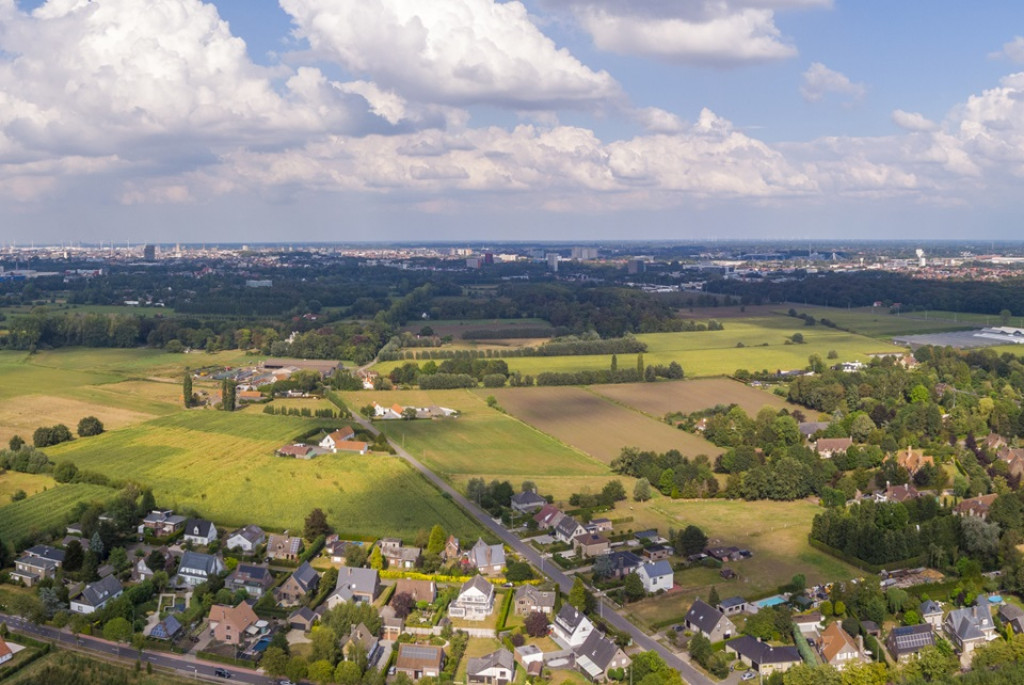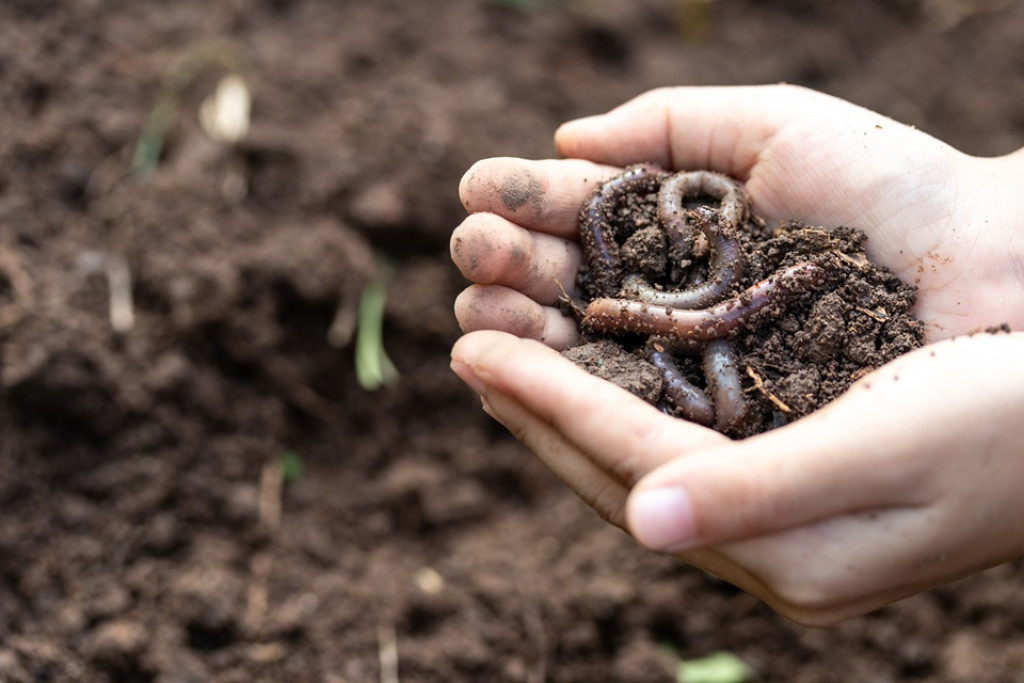Summary
The organic farming sector (AB) in Wallonia needs local references for
i) assess the feasibility and benefits of reducing tillage,
ii) quantify the amenity of organic production systems,
iii) Control soil organic matter loss and erosion risks in field crop areas.
The SolAB project proposes to provide answers to these questions through an integrated analysis of soil quality for a selection of plots in AB representative of the diversity of Walloon situations and the fine analysis of results with regard to the orientation of farms and land management practices.
The main strength of the project lies in the association of key players in the development of AB in the Walloon Region (BIOWALLONIE, CRA-W) with different specialists in soil analysis with complementary expertise (ULiège, UCLouvain, CRA-W). The project aims to follow two types of experimental arrangements :
- Field testing devices that allow innovative cropping systems (mostly no tillage) to be compared with a control system. These tests will test practices that present a high level of economic risk for farmers in order to assess their benefits for soil quality and their technical feasibility on Walloon organic farms ;
- An expanded network of farm plots, which will allow a diversity of real situations to be understood at the regional level and thus support the representativeness of the references provided to the agricultural sector.
The soil parameters monitored are related to three types of services provided by soils complementary to the crop production service: climate regulation (organic status of the soil), water regulation (structural state), habitat for biodiversity (abundance, activity and microbial diversity). Results are expected by September 2027.
Context
The European Union (COM(2021)699) proposes a definition of soil health based on good physical, chemical and biological condition of the soil, allowing it to provide its main ecosystem services (SE) continuously and as much as possible. At the European level, 60 to 70% of soils are degraded, no longer offering the capacity to provide these SE to their full potential. In particular, the loss of biodiversity, the loss of organic matter and the resulting structural accidents and erosion problems are three important issues in the Walloon region (Figure 1).
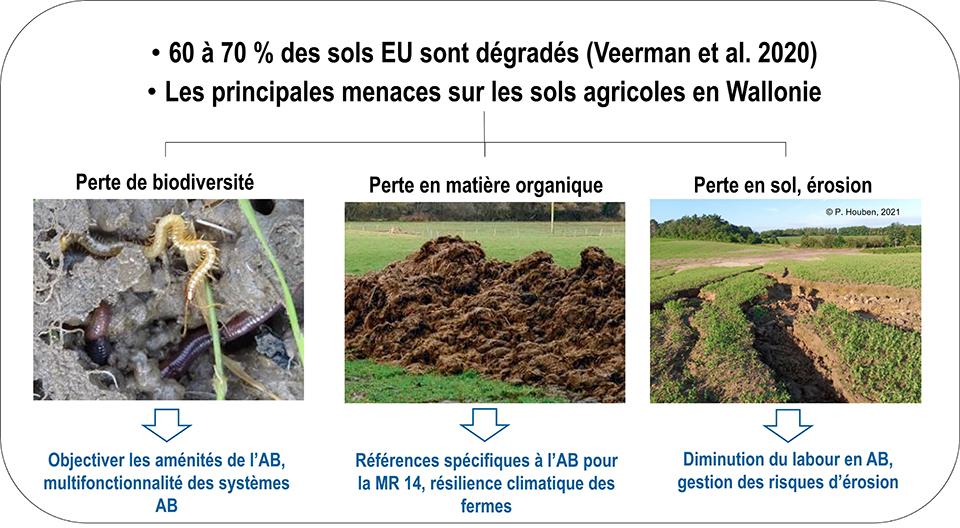
Organic farming (AB) is generally recognized for its environmental and societal benefits. Among these, the increased multifunctionality of AB systems is generally recognized, especially in terms of biodiversity conservation, water quality and climate regulation through lower energy consumption. However, the impact of more or less intensive and off-AB practices (on abundance, activity and microbial diversity is unknown, and AB’s performance in soil carbon storage) varies locally. In Wallonia, the decline in soil organic matter levels and the resulting increase in soil susceptibility to erosion are two major problems for plots of land in the region.
In this context, the AB sector therefore needs local references to mobilize best practice combinations to achieve the objectives of the ASM-soil (MR14) aimed at improving the organic status of parcels. The Walloon and European bio sector is also looking for locally adapted systemic solutions to reduce its dependence on tillage and maintain its soil capital in the long term while maintaining productivity and weed control.
Approach and objectives
The SolAB project is based on two main pillars:
An in-depth analysis of agricultural practices for selected organic managed parcels (AB) and translation of these practices into category or quantitative indicators (Figure 2);
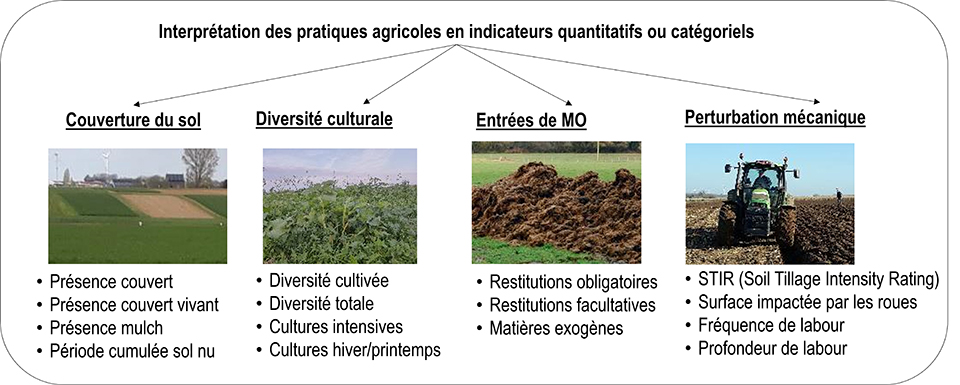
An integrated analysis (physical, chemical and biological) of soil quality based on indicators related to three types of ecosystem services provided by the soil (climate regulation, water regulation and biodiversity), complementary to the biomass production service (Figure 3);

In conjunction with the biomass production service, nutrient levels and soil acidity will be analyzed. To understand the climate control service, organic matter stocks and labile carbon content will be measured, as well as the Corg:clay ratio. To evaluate the water cycle control service, the structural stability of the soil will be quantified. Soil biodiversity will be assessed by measuring the abundance, diversity and activity of microorganisms. In particular, the diversity of arbuscular mycorrhizal fungi present in the rhizosphere will be studied.
The project aims to follow two types of experimental devices (Figure 4):
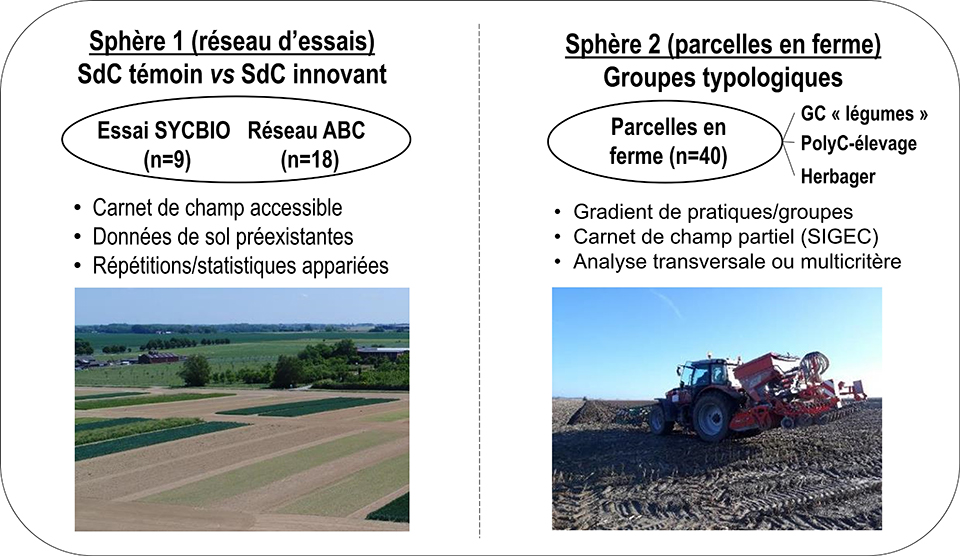
i) field testing devices that allow for comparison of innovative cropping systems (mostly no tillage organic) to a control system. These tests will test practices that present a high level of economic risk for farmers in order to assess their benefits for soil quality and their technical feasibility on Walloon organic farms;
ii) an expanded network of farm parcels, which will allow a diversity of real situations to be understood at the regional level and thus support the representativeness of the references provided to the agricultural sector.
Soil parameters will be compared to agricultural practices in order to identify the factors controlling different dimensions of soil quality, depending on the orientation of farms. The project has two main objectives:
Identify the agronomic factors controlling the different dimensions of soil quality, depending on the type of farm speculation (arable crops, mixed crop-livestock, grassland). In particular, the following specific objectives are targeted:
Identify the agronomic levers to achieve MR14 objectives (ASMM-soil) in the context of AB;
Quantify the benefits (positive externalities) of organic farming, especially in terms of soil biodiversity preservation.
Testing practices with a high level of economic risk (AB without tillage) for farmers to assess their technical feasibility in Walloon organic farms and their benefits for soil quality.
Project Progress
Figure 5 shows the different work packages (WP) of the SolAB project, highlighting the interactions between WP.
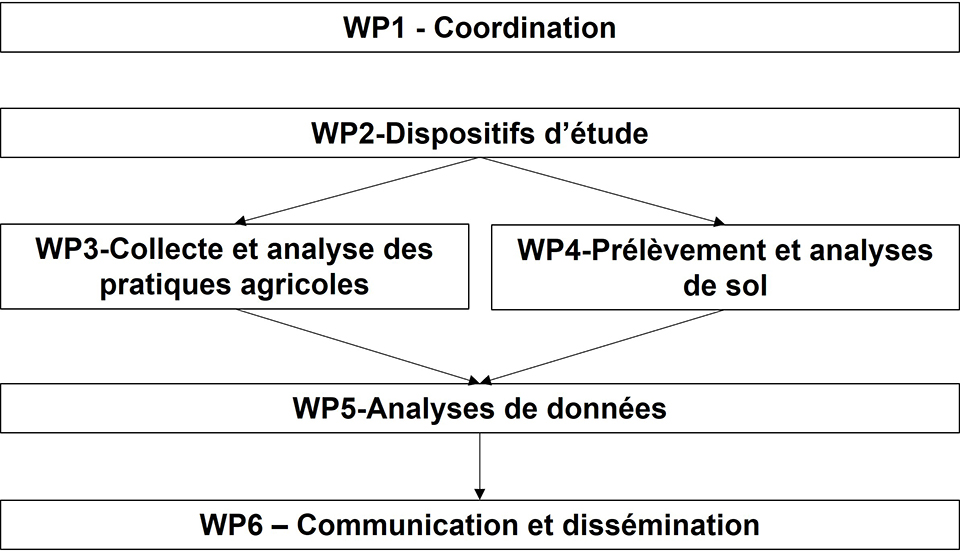
WP1 includes project coordination tasks, WP2 aims to define the study devices (networks of plots), to draw up an inventory of available information and possible synergies with related projects. The WP3 includes the collection of information on agricultural practices and their translation into quantitative or category indicators. WP4 includes all tasks related to sampling and soil analysis. The WP5 will be to analyse the effect of agricultural practices on soil parameters, in a univariate and multi-criteria manner. WP6 includes all communication tasks to the agricultural sector or scientific community.
The approximate timing of the various actions is shown in the time line presented in Figure 6.

Related projects
The project is directly linked to SOL-PLATEFORMES (https://www.cra.wallonie.be/sol-plateformes) and the ABC network of the AGROECOLOGY-TRANSECT project (https://www.cra.wallonie.be/une-participative-recherche-participative-pour-soutenir-la-transition-agroécologique).
Partnership
- Biowallonie
- Gembloux ABT (Uliège)
- UCLouvain

Funding
Recovery Plan of Wallonia #WallonieRelance

